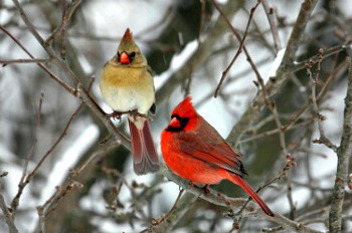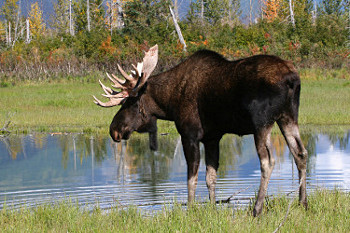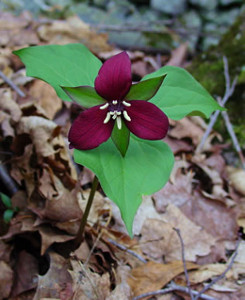Nature of New England
Photos and information about birds, mammals, butterflies & wildflowers
Seasons of Nature in New England
-
Early Summer
-
- In early June, the female ruby-throated hummingbird lays her two pea-sized eggs. Occasionally, she will lay only one egg. The male does not participate in nest-building, incubation, or caring for the young. The chicks hatch after approximately 11 to 14 days and fledge about 18 to 22 days after hatching.
- Beginning around the first or second week of June, fireflies ("lightning
bugs") can be seen after dusk. One reason fireflies flash
is to attract mates.
Each species of fireflies has its own pattern of flashing - which helps them find a mate of their own species. Some think that fireflies may also flash in order to warn predators away.
Fireflies have a chemical in their bodies that has a disagreeable taste for some predators. Potential predators could associate the flashing with a previous unpleasant meal, and thus stay away. - Early June is the peak birthing time for white-tailed deer. Some fawns are born much later in the summer, but those fawns have less time to mature and put on weight before winter - and so have less chance to survive.
- The young of many bird species will fledge during the early summer period. The first brood of the Eastern phoebe leaves the nest in early June. The female will begin laying eggs for the second brood within a week or less, while the male feeds the young fledglings.
- Sometime in June, coyote pups and young woodchucks will emerge from their dens. Red foxes can been seen during daylight hours with their young pups, also known as kits.
- Usually by mid-June or earlier, the monarch butterflies have completed their migration north. The migrating females lay their eggs on milkweed plants along their migration path. These eggs hatch into caterpillars and later metamorphose into the adult monarchs that complete the migration.
- Cedar waxwings nest later than most birds - usually in the second half of June. Their nestlings subsist mainly on berries and the fruits of trees - which don't ripen until late June or July. It is thought that this may be the reason for the late nesting of the cedar waxwings.
- American goldfinches are also among the late nesters - typically in late June or early July. The female often uses thistle down to line her nest, so you'll know the goldfinches are probably nesting when you see the thistle has gone to seed.
- The peak mating season for the black bear is around the third week in June. Female black bears usually
breed only every other year, so her cubs remain with her for a year
and half. As mating season approaches, females with yearling
cubs will send them off on their own. Females with young cubs (born
in February) will not breed that year.
Note: The "early summer" period is the time
from approximately June 1st through mid-July. Timing of events will
vary depending upon your latitude and elevation.
Photo credits: ©
S. Byland,© S. D. Bower, © Troy Bartlet, art-today, © B. Macqueen, USFWS






